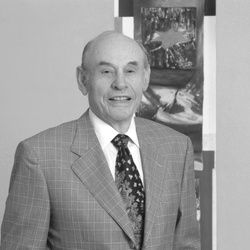Stanislawow
Pronounced “Stahn-ees-WAH-voov” (Ukrainian: Івано-Франківськ / Ivano-Frankivsk, Russian: Ивано-Франковск / Ivano-Frankovsk, German: Stanislau, Yiddish: סטאַניסלעוו / Stanislev, Hebrew: איוונו-פרנקיבסק)
Polish nobleman Jendrzej Potocki invited Jewish and Armenian traders to Stanisławów in the 1660s to boost the local economy. As the town grew, a Jewish quarter developed around a wooden synagogue near the central market square. The Polish, Jewish, Armenian and Ukrainian communities competed for business and an anti-Jewish pogrom broke out in 1719. Town authorities were pressured to limit Jewish trading rights and in 1743 imposed a burdensome tax on the Jewish community.
In 1772, Poland lost Stanisławów to the Austrian monarchy. Despite continued restrictions on Jewish life, by the end of the 1700s the Jewish population of Stanisławów reached about 2,200 (roughly 40 percent of the estimated total). Jewish men worked in a variety of jobs, many as traders or tailors. Still, Jews did not receive equal rights as Austrian citizens until the 1860s. By the late 1800s, Jewish men made up about half of the city council and a Jew served as mayor from 1897 to 1919. Jewish businesses thrived and in the early 1900s Jewish residents founded weekly newspapers printed in Hebrew and the Jewish language of Yiddish.
After World War I (1914-1918), the Austro-Hungarian Empire collapsed and Ukrainian, Soviet and Polish forces fought for control of the area around Stanisławów. Under the short-lived West Ukrainian People’s Republic, Jews and other minorities were granted equality under the law. When Stanisławów became part of Poland in 1919, Jewish employees were fired from important jobs in schools and government. Some Polish troops attacked Jewish residents.
In the 1920s and 1930s, multiple Jewish schools in Stanisławów focused on Hebrew-language and job training that would help young people emigrate to Palestine (then a British colony). Some Jewish families earned a living through factory work while others owned small businesses as bakers or tailors. Centuries-old economic resentments manifested in strengthening anti-Jewish movements and an antisemitic boycott.
Soon after World War II began in September 1939, Soviet (Russian) troops invaded Stanisławów from the east. Then, in June 1941, German forces invaded from the west. Two months later, Nazis tortured and murdered hundreds of educated and influential members of the Jewish community in a nearby forest. That fall all Jews were required to wear a white armband with a blue Star of David. Survivor Bill Morgan remembers how he and his family were forced to move from their small village into the Stanisławów ghetto. He labored for a Ukrainian farmer on land that had been confiscated from Jewish owners.
On October 12, 1941, Nazis stopped 17-year-old Bill Morgan on the way to his farm work and ordered him to dig large pits in the Jewish cemetery. Meanwhile, German and Ukrainian guards marched thousands of Jews to the cemetery from the main market square. Morgan watched from behind a tombstone as German police shot groups of Jewish men and women “one by one” into the open graves. Between 8,000 and 12,000 people were murdered on that “Bloody Sunday.”
In December 1941, the Jewish ghetto of Stanisławów was sealed. With more than 20,000 residents, several were forced to take shelter in synagogues and warehouses. Many died of starvation and disease. Bill Morgan recalled how “every morning when going to work I stepped over corpses.”
Beginning in March 1942, Nazis began deporting the remaining Jewish residents of Stanisławów to the killing center of Bełżec. In August 1942, a Jew was accused of killing a Ukrainian policeman. As retribution, Nazis hanged several Jewish policemen including Bill Morgan’s brother Solomon. By February 1943 the city was declared “Judenrein” or free of Jews.
Soviet troops liberated Stanisławów from German occupation in July 1944. The centuries-old Jewish community of Stanisławów had been annihilated.
Stanislawow: Photographs & Artifacts
Destroyed Communities Memorial Slope
Stanislawow: Survivors

I was punished from the day I could walk by my gentile friends. I was always called a ‘no-good Jew’ and therefore I was always either beaten up or kicked or stoned. My parents didn’t do any explaining. The answer that I got from my father is that G-d will punish them and we are supposed to be the Chosen People . . . and I was always waiting for them to be punished. In the meantime, I got beaten up pretty good.